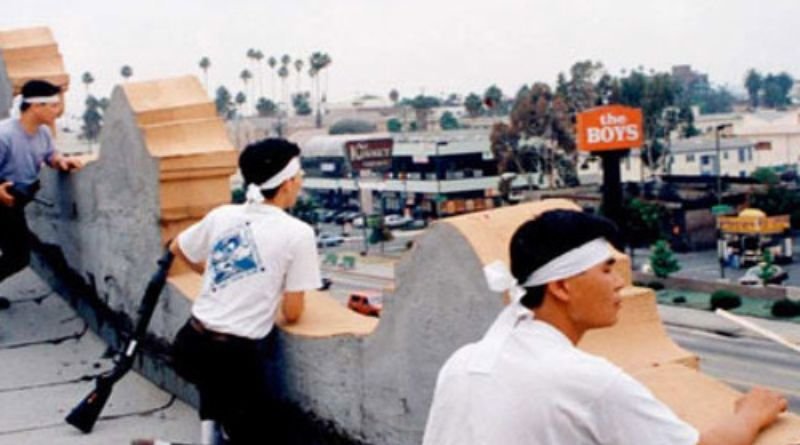The term “Roof Koreans” refers to a group of Korean-American business owners and community members who gained national attention during the 1992 Los Angeles riots. These individuals, primarily Korean shopkeepers, were seen defending their businesses from looters by taking to the rooftops of their stores, armed and ready to protect their livelihoods. Their actions, though controversial, became a symbol of resilience, self-defense, and community solidarity during a period of social unrest.
In this article, we will explore the history of the Roof Koreans, the events of the 1992 riots, and their lasting impact on both the Korean-American community and broader American culture. We’ll also address some frequently asked questions to help provide context for those unfamiliar with this pivotal moment in history.
The 1992 Los Angeles Riots: A Turning Point
To fully understand the significance of the Roof Koreans, it is important to first look at the context in which their actions took place.
The 1992 Los Angeles riots, also known as the Rodney King riots, were sparked by the acquittal of four white Los Angeles Police Department officers who were caught on camera brutally beating African American motorist Rodney King. The acquittal of the officers led to widespread outrage, and protests quickly escalated into riots. Over the course of six days, the city was engulfed in chaos, with looting, arson, and violent clashes between protesters and police.
The Korean-American community, which had been growing in Los Angeles since the 1970s, found themselves at the center of the violence. Many Korean immigrants owned small businesses in South Los Angeles, particularly in neighborhoods where racial tensions were already high. These businesses, often run by families, became prime targets for looters who saw them as symbols of economic inequality or, in some cases, just easy marks for theft.
Amid the destruction, a group of Korean shopkeepers decided to take matters into their own hands. Armed with rifles, shotguns, and handguns, they climbed to the rooftops of their stores and began to defend their property against looters. The image of these armed Korean-Americans standing guard from the rooftops became iconic, symbolizing both a desperate attempt to protect their businesses and a larger struggle for self-defense in the face of systemic injustice.
The Roof Koreans’ Impact and Symbolism
The Roof Koreans became a symbol of self-reliance and community protection in a city where minority communities were left to fend for themselves amidst the chaos. While their actions were controversial—some saw them as vigilantism, others as a necessary response to a broken system—their presence marked a turning point in the way Korean-Americans viewed their relationship to both the American justice system and their own communities.
1. A Cultural Movement
The term “Roof Koreans” has transcended the events of the 1992 riots to become a symbol of cultural pride and resilience. For many Korean-Americans, the image of these armed business owners standing on rooftops represents a bold statement about their right to defend themselves and protect their families.
It was also a reflection of the growing influence of the Korean-American community in Los Angeles and beyond. The experience underscored a desire among immigrants and their descendants to assert their presence and influence in the American cultural landscape, not only as workers or service providers but as individuals who deserved to feel safe in their own neighborhoods.
2. Community Solidarity
The actions of the Roof Koreans highlighted the importance of community solidarity. The Korean-American community, which had been the target of racial discrimination, economic hardship, and violence, came together to defend their businesses and their livelihoods. Despite being outsiders in a country where they had often faced marginalization, these shopkeepers made a stand, showing their willingness to protect their homes, businesses, and cultural identity.
It’s worth noting that many of the Roof Koreans did not act in isolation. In some cases, they worked alongside their African-American neighbors, offering them protection or sharing resources during the riots. These collaborations, although not widely reported, showcased the potential for unity across racial lines during times of social upheaval.
3. Political and Social Change
The 1992 riots and the rise of the Roof Koreans also led to significant political and social changes within the Korean-American community. In the years following the riots, many Korean-American leaders began to advocate more strongly for political and social representation, both within the Korean-American community and in broader American society.
The riots and the Roof Koreans also shed light on the challenges faced by immigrants and minority groups in America, especially when it came to issues of law enforcement, racial tensions, and economic inequality. Many members of the Korean-American community became more politically active, seeking to address the root causes of violence and discrimination while also advocating for better protection and representation.
Roof Koreans in Popular Culture
In the years since the 1992 riots, the legacy of the Roof Koreans has been referenced and reinterpreted in various forms of popular culture. They have been featured in documentaries, movies, and news articles, with many viewing them as a symbol of defiance, resilience, and empowerment for marginalized communities.
The Roof Koreans have become a topic of discussion in Korean-American culture, with some viewing their actions as a necessary response to a system that failed them, while others debate whether it was a necessary evil or a misguided choice. Regardless of the perspective, their actions have undeniably shaped the conversation about self-defense, community protection, and racial justice in America.
Frequently Asked Questions (FAQs)
1. What are Roof Koreans?
Roof Koreans refer to a group of Korean-American business owners who defended their stores from looters during the 1992 Los Angeles riots. Armed with firearms, they took to the rooftops of their shops to protect their businesses in the face of widespread violence and lawlessness.
2. Why did the Roof Koreans take action during the riots?
During the 1992 riots, many Korean-owned businesses in Los Angeles were targeted by looters. The Roof Koreans took action to protect their livelihoods, as local authorities were overwhelmed and unable to provide adequate protection. They defended their businesses as a means of self-preservation, as they felt abandoned by the police and the broader system.
3. What is the significance of the Roof Koreans in American history?
The Roof Koreans are seen as a symbol of resilience, self-defense, and community solidarity. Their actions highlighted the struggles faced by immigrant communities, particularly Korean-Americans, in the face of racial and economic adversity. They also sparked conversations about minority rights, self-defense, and social justice.
4. What happened to the Roof Koreans after the riots?
After the 1992 riots, many of the individuals who became known as the Roof Koreans continued to run their businesses. The events of the riots led to greater political engagement among the Korean-American community, with many advocating for better representation and stronger ties to the broader American political landscape. The incident also helped raise awareness about the challenges faced by immigrants and minorities.
5. Is the term “Roof Koreans” still used today?
Yes, the term “Roof Koreans” continues to be used as a cultural reference point, especially in discussions about the Korean-American community’s role in American society. It has also been embraced as a symbol of strength and resilience, often cited in conversations about self-defense and empowerment for marginalized groups.
6. Are the Roof Koreans seen as heroes or vigilantes?
Opinions on the Roof Koreans vary. Some view them as heroes who took a necessary stand in the face of lawlessness, while others see them as vigilantes who took matters into their own hands. However, their actions undeniably raised important questions about self-defense, racial inequality, and community empowerment.
Conclusion
The Roof Koreans are an integral part of the story of the 1992 Los Angeles riots, representing the spirit of resilience, survival, and community solidarity in the face of overwhelming adversity. While their actions remain controversial, they have become a symbol of the complexities of racial and economic tension in America. The legacy of the Roof Koreans continues to inspire conversations about self-defense, immigrant rights, and the power of marginalized communities to protect themselves and their interests.
As we reflect on their actions, it is important to recognize the broader cultural and political impact of the events that unfolded in Los Angeles in 1992, and how they shaped the future of both the Korean-American community and American society as a whole.



